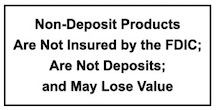Whether you get your health insurance through your employer or the open market, in addition to understanding the various coverage options and deductibles, you’ll also run into deciding whether to enroll in a plan with a health savings account (HSA) or flexible spending account (FSA). Here is a brief explanation of the similarities and differences between the two accounts.
Introduction
Healthcare expenses, even with insurance, can still be expensive when you add up the annual deductibles and co-pays that you pay out of pocket in addition to your premiums. This is where an HSA or FSA comes into play.
Both accounts are funded by pre-tax dollars from your earnings. You can use the funds to pay for your deductible and co-pays for medical, dental, and vision visits. However, you cannot use the money to pay for your insurance premiums.
The good news is that you can buy hundreds of other health-related expenses, including prescription and over-the-counter medications, bandages, birth control, sunscreen, contact lenses and prescription glasses, medical devices, and more. Depending on your plan, you might need a prescription, a doctor’s directive, or a letter of medical necessity for items to be covered under your HSA or FSA.
With both accounts, you are given a debit or credit card that can be used at the point of sale, like any other debit or credit card. If you pay for covered items with your own money, you can submit a claim along with the receipt for reimbursement.
Health Savings Accounts (HSAs)
HSAs are available through both an employer-sponsored plan as well as a self-insured plan. However, you are only eligible for this type of account if you have a high deductible health plan (HDHP) and aren’t enrolled in Medicare.
For 2020, you can contribute up to $3,550 a year into your HSA for an individual plan. For a family plan, the maximum contribution is $7,100. Although you can specify how much your employer withholds from your salary to place in your HSA, you can make additional payments anytime. The funds withheld by your employer are tax-free while the payments you make are tax-deductible.
An HSA has two attractive features to consider. The first is that the funds in your HSA may be invested, and the interest earned is not subject to tax. The second feature is that money in your HSA rolls over at the end of each benefit year so that you get to keep unused funds. Also, if you leave your employer or become covered in a non-HDHP, you can continue to use your HSA — you just can’t make further contributions.
Flexible Spending Accounts (FSAs)
FSAs are only available through an employer-sponsored plan. For 2020, you can contribute up to $2,750 for the year by telling your employer how much you want to be withheld from your paycheck. Unlike an HSA, you cannot make additional contributions to your account aside from what you instruct your employer. However, some employers may opt to make an additional contribution up to $500 a year to your account.
Regardless of how much you have contributed to your account, the total annual election is pre-funded, meaning the full amount is available immediately at the beginning of the benefit year. However, if you end your insurance coverage and have spent more than you have contributed to your FSA, you may have to pay the balance.
The downside of an FSA is the use-it-or-lose-it policy. While you can roll over up to $500 into the next benefit year, you will have to forfeit any unused funds in your FSA at the end of your benefit year.
Final Words
When weighing your decision to enroll in a health insurance plan with an HSA or FSA, you should consider your health and medical needs You’ll have to assess the trade-off between having lower premiums for a higher deductible and vice versa.






